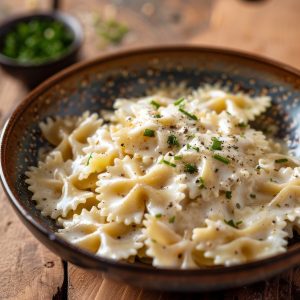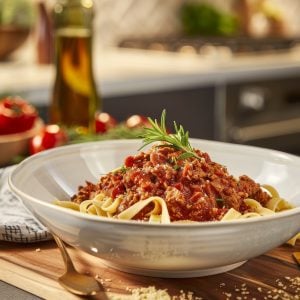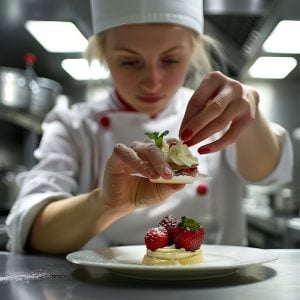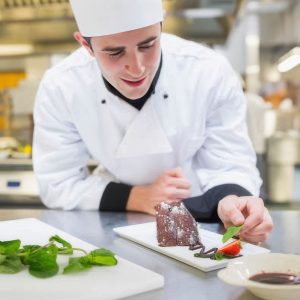What You May Learn In Your First Year?
Embarking on your journey through culinary school is an exciting and transformative experience. The first month is particularly pivotal, as it sets the foundation for your culinary education and future career.
From the moment you step into the kitchen, you’ll be immersed in a world of flavors, techniques, and traditions that will shape your culinary perspective. Expect a blend of intensive hands-on training and classroom instruction, where you’ll learn the basics of knife skills, kitchen safety, and food sanitation.
You’ll also be introduced to the foundational cooking techniques, such as sautéing, braising, and baking, and begin to understand the science behind what makes food delicious. Equally important are kitchen etiquette and teamwork lessons, as you’ll quickly discover that a successful kitchen operates much like a well-oiled machine.
Beyond the technical skills, the first month is about acclimating to the culinary world’s fast-paced and often demanding environment. It’s a period of adjustment where you’ll develop discipline, time management, and the ability to work under pressure.
The relationships you build with your instructors and classmates will be crucial. They will provide support and camaraderie as you navigate the challenges and triumphs of your culinary education.
Knife Skills
In the first month of culinary school, you will learn various essential knife skills that form the foundation for all your future culinary endeavors. Here are the essential skills you can expect to master:
- Knife Safety and Handling: Properly holding and handling a knife is crucial to prevent accidents. You’ll learn about the importance of a firm grip, the correct way to carry a knife, and safety precautions in the kitchen.
- Basic Cuts:
- Chopping: Quick, rough cuts used for preparing vegetables and other ingredients.
- Dicing is cutting ingredients into small, even cubes, typically in small (brunoise), medium, and large sizes.
- Mincing: Finely chopping ingredients, often used for garlic, herbs, and onions.
- Precision Cuts:
- Julienne: Cutting ingredients into thin, matchstick-sized strips, ideal for garnishes and stir-fries.
- Batonnet: Slightly thicker than julienne, these are stick-shaped cuts used for fries and vegetables.
- Chiffonade: Slicing leafy greens or herbs into thin ribbons, perfect for garnishes and salads.
- Advanced Cuts:
- Paysanne is the process of cutting ingredients into thin, flat, square, or triangular pieces, often used for decorative purposes.
- Rondelle: Slicing cylindrical vegetables, such as carrots, into round disks.
- Filleting and Boning: Techniques for filleting fish and boning poultry or meat ensure that you can work with a variety of proteins.
- Sharpening and Maintenance: Proper knife maintenance, including sharpening and honing, keeps your tools in optimal condition.
Mastering these knife skills will significantly improve your efficiency and precision in the kitchen, laying the groundwork for more complex culinary techniques.
Ingredient Familiarity
In the first month of culinary school, you will focus on ingredient identification, which is crucial for understanding how to effectively use and prepare various ingredients. Here are the key areas you will cover:
Fruits and Vegetables
- Common Varieties:
- Recognizing and naming a wide range of fruits and vegetables, both common and exotic.
- Understanding seasonal availability and peak freshness.
- Characteristics and Uses:
- Identifying different textures, flavors, and uses of fruits and vegetables.
- Learning which cooking methods are best suited for various types (e.g., roasting root vegetables, blanching leafy greens).
- Preparation Techniques:
- Cleaning, peeling, and cutting different fruits and vegetables.
- Knowing which parts of the produce are edible and how to utilize them efficiently.
Herbs and Spices
- Fresh and Dried Herbs:
- Identifying common herbs such as basil, cilantro, thyme, and rosemary.
- Understanding the differences between fresh and dried herbs and their appropriate uses.
- Spice Identification:
- Recognizing whole and ground spices like cumin, coriander, paprika, and turmeric.
- Learning about the flavor profiles and culinary uses of various spices.
- Proper Storage:
- Storing herbs and spices to maintain their freshness and potency.
- Knowing the shelf life of different herbs and spices.
Proteins
- Meat and Poultry:
- Identifying cuts of beef, pork, lamb, and poultry.
- Understanding the characteristics of different cuts and their best cooking methods (e.g., grilling, braising, roasting).
- Seafood:
- Recognizing various types of fish and shellfish.
- Learning about sustainability and selecting fresh seafood.
- Eggs and Dairy:
- Identifying different types of eggs, milk, cheese, and other dairy products.
- Understanding the culinary applications of various dairy products.
Grains and Legumes
- Common Grains:
- Identifying types of grains such as rice, quinoa, barley, and oats.
- Learning about the nutritional benefits and cooking methods for each grain.
- Legumes:
- Recognizing various legumes like beans, lentils, and chickpeas.
- Understanding their uses in different cuisines and their nutritional value.
Pantry Staples
- Flours and Starches:
- Identifying different types of flours (e.g., all-purpose, bread, pastry) and starches (e.g., cornstarch, tapioca).
- Knowing their uses in baking and cooking.
- Oils and Vinegar:
- Recognizing various cooking oils (e.g., olive oil, canola oil) and vinegar (e.g., balsamic, apple cider).
- Understanding their flavor profiles and culinary applications.
- Sweeteners:
- Identifying different types of sweeteners such as sugar, honey, maple syrup, and artificial sweeteners.
- Learning about their uses in cooking and baking.
By mastering ingredient identification, you can select the best ingredients for your dishes, understand how to store and prepare them properly, and enhance the flavors and textures of your culinary creations.
Kitchen and Food Safety
Kitchen Safety
- Personal Hygiene:
- Regular hand washing and sanitizing.
- Proper attire, including chef’s coats, aprons, and non-slip shoes.
- Hair restraints and minimal jewelry to prevent contamination.
- Knife Safety:
- Proper handling and carrying techniques.
- Safe-cutting practices include using a stable cutting board and keeping fingers tucked away.
- Regular sharpening to maintain a safe and effective edge.
- Equipment Safety:
- Correct usage of kitchen appliances like mixers, slicers, and blenders.
- It is understanding the functions and safety features of each piece of equipment.
- Proper cleaning and maintenance to avoid malfunctions.
- Fire Safety:
- Identifying and using different types of fire extinguishers.
- Handling flammable materials and open flames with caution.
- Knowing emergency procedures and evacuation routes.
- Chemical Safety:
- Safe storage and labeling of cleaning agents and chemicals.
- Use chemicals according to instructions and wear appropriate protective gear.
- Understanding Material Safety Data Sheets (MSDS) for information on hazardous substances.
Kitchen Organization and Efficiency
- Mise en Place:
- The practice of having all ingredients prepped and ready before cooking.
- Organizing tools and ingredients for maximum efficiency.
- Importance of time management and workflow in the kitchen.
- Sanitation Practices:
- Proper cleaning and sanitizing of workstations and equipment.
- Preventing cross-contamination by separating raw and cooked foods.
- Regularly disinfecting surfaces and tools to maintain a hygienic environment.
- Food Storage:
- Correct storage temperatures for different types of food.
- Labeling and dating food items to ensure freshness and safety.
- Understanding the FIFO (First In, First Out) method to manage inventory.
- Waste Management:
- Proper disposal of kitchen waste and recycling practices.
- Reducing food waste through efficient planning and preparation.
- Safe handling and disposal of sharp objects and hazardous materials.
Mastering these kitchen and safety fundamentals will create a solid foundation for your culinary training, ensuring a safe and organized environment that allows for creative and effective cooking.
















2 Responses
Thank you for the awesome insight into the Culinary World I love and am interested in joining for School and my Career.
You are welcome and thanks for reaching out.